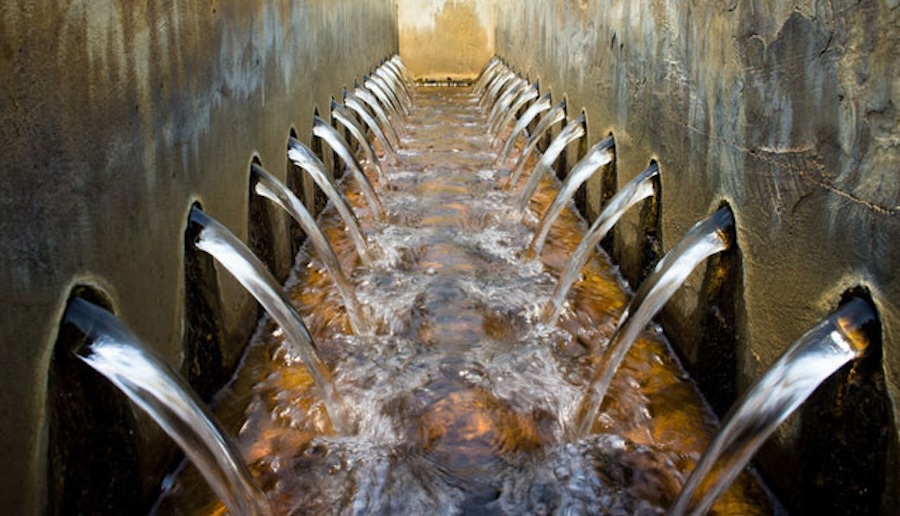One of the indicators used to assess the level of contamination is Coliform – a group of bacteria capable of detecting dangerous pathogenic agents. Understanding the concept, classification, roles, and impacts of Coliform not only raises awareness about water safety but also lays the foundation for designing and operating effective wastewater treatment systems. The following article provides an in-depth overview of Coliform and introduces common treatment methods to effectively eliminate them.
Coliform is a group of Gram-negative, rod-shaped, non-spore-forming bacteria that can ferment lactose to produce acid and gas within 24–48 hours at 35–37 °C. They are commonly found in soil, water, plants, and especially in the feces of warm-blooded animals, including humans.
Coliform is widely used as a microbial indicator to assess the safety and quality of water or food, as their presence suggests potential contamination by pathogenic microorganisms from fecal sources.
Coliform is divided into three main categories:

What is Coliform?
Coliform, especially fecal coliform and Escherichia coli (E. coli), are used to assess the level of fecal contamination in wastewater. These bacteria typically appear when wastewater contains human or warm-blooded animal waste, indicating the possible presence of other pathogenic microorganisms.
Testing for coliform helps environmental engineers and wastewater treatment operators quickly determine microbial contamination levels and adopt appropriate treatment measures.
Additionally, coliform serves as an indicator to evaluate the performance of wastewater treatment processes. By comparing coliform density before and after treatment, it is possible to determine the microbial removal efficiency of each stage—especially disinfection processes such as chlorination, ozonation, or UV treatment. Due to their prevalence, ease of testing, and low cost, coliforms are standard indicators in many national and international discharge regulations, ensuring treated water is safe before being released into the environment.
When untreated or poorly treated wastewater containing coliforms enters rivers, lakes, or infiltrates into groundwater, it can seriously contaminate water sources. Coliforms—particularly fecal coliform and E. coli—are clear indicators of biological and fecal waste in water sources. This contamination reduces the quality of surface and groundwater, impacting domestic water supply systems, agriculture, and aquatic ecosystems that depend on these sources.
Coliforms do not directly cause diseases but signal the presence of other pathogens such as Salmonella, Shigella, Giardia, and enteric viruses. When people come into contact with contaminated water—through drinking, bathing, irrigation, or food washed with it—the risk of contracting diseases like acute diarrhea, typhoid, enteritis, or hepatitis A increases significantly. This is particularly dangerous for children, the elderly, and immunocompromised individuals, potentially leading to disease outbreaks in communities.
Prolonged presence of coliform in untreated wastewater can disrupt aquatic ecosystems. High organic content and microbial loads reduce dissolved oxygen in water, causing eutrophication and killing fish, shrimp, and other aquatic species. Furthermore, bacteria can accumulate in sediments and the food chain, causing long-term impacts on biodiversity and the self-recovery capacity of water environments. Without proper control, ecosystems may degrade beyond repair.
Membrane Bioreactor (MBR) technology combines aerobic biological processes with membrane filtration. In this system, bacteria and organic matter are decomposed in the bioreactor, and then the water is filtered through membranes that retain all microorganisms, including Coliform and E. coli.
MBR systems offer high removal efficiency – typically achieving 6 to 6.7 log reduction for coliform and around 6.1–6.2 log for E. coli. This is one of the most modern and effective methods for systems requiring high-quality treated water.
Systems such as MBBR (Moving Bed Biofilm Reactor) and RBC (Rotating Biological Contactor) use carriers for microorganisms to attach and form biofilms. These biofilms help break down organic matter and absorb microbial contaminants, including coliforms. This model is flexible and suitable for treatment plants with varying flow rates.
Meanwhile, constructed wetlands simulate natural ecosystems by combining soil, plants, and microorganisms. Coliform removal efficiency in these systems ranges from 1 to 3 log, depending on the design (subsurface flow is more effective than surface flow) and operational conditions.
Disinfection is the final step to completely eliminate remaining bacteria. Common methods include chlorination, ozonation, and UV radiation. Chlorine is widely used due to its low cost, but ozone and UV have the advantage of not creating harmful by-products.
In addition, advanced membrane filtration systems such as ultrafiltration or nanofiltration, when combined with ozone disinfection, can achieve nearly absolute removal—up to 100%—of coliform and E. coli. These technologies are typically applied in hospital wastewater treatment, food processing, or facilities with strict discharge requirements.

Most Effective Methods for Treating Coliform
In summary, Coliform is a key microbiological indicator that reflects the level of fecal contamination in wastewater and potential threats to ecosystems. Monitoring coliform density not only helps assess treatment efficiency but also serves as an early warning for pollution risks.
Modern treatment technologies such as MBR, MBBR, RBC, and disinfection methods using ozone and UV are increasingly being implemented to ensure treated water meets safety standards before being discharged into the environment. Therefore, investing in microorganism control and treatment systems is a strategic move to protect public health and promote sustainable development in the future.